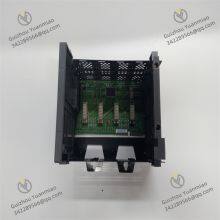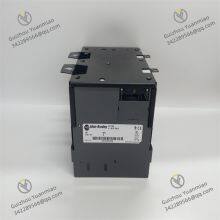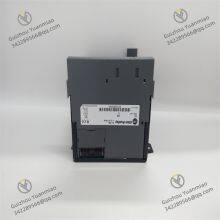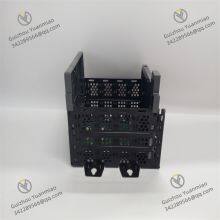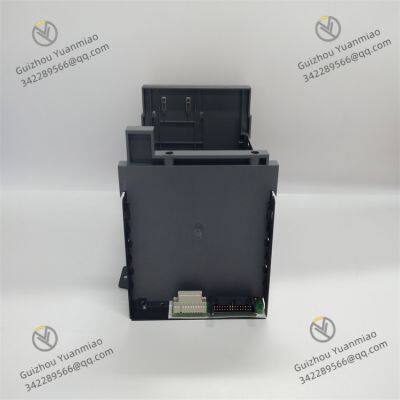Material
Other, Global universal model
Condition
Other, Global universal model
Task
Other, Global universal model
Mathematical Model
Other, Global universal model
Signal
Other, Global universal model
Customized
Non-Customized
Structure
Other, Global universal model
Operating temperature
0°C - 60°C
Humidity
5% - 95% (non - condensing)
I. Product Overview
Rockwell Automation 1746 - A4 is a 4-slot rack module in the SLC 500 series, playing an important hardware supporting role in industrial automation control systems. As a classic Programmable Logic Controller (PLC) system, the SLC 500 series is widely used in fields such as production line control in manufacturing, mechanical processing equipment control, and warehousing and logistics systems. 1746 - A4 provides a stable installation and connection platform for I/O modules, communication modules, etc. of this series. It is a key component for building small and medium-sized industrial automation control systems. With its reliable structural design and adaptability, it ensures data transmission and collaborative work between various modules of the system.

II. Functional Features
Stable module carrying capacity: It is equipped with 4 standard slots, which can stably install various I/O modules of the SLC 500 series, such as digital input/output modules, analog input/output modules, etc. Each slot is designed with precise guide rails and connection interfaces to ensure that the modules are installed firmly. They can maintain stable connections even in environments with vibration and impact in industrial sites, providing a reliable physical basis for signal transmission between modules.
Efficient backplane communication support: A dedicated backplane bus is integrated inside the rack, which provides a high-speed data transmission channel for each module installed on the rack. Through the backplane bus, the CPU module can quickly exchange data with each I/O module, realizing real-time collection of on-site equipment status and timely issuance of control instructions, thus ensuring the real-time performance and response speed of the control system.

Compact structural design: It adopts a compact shape design, occupying a small space, and is suitable for installation in industrial control cabinets with limited space. Its standardized size matches other components of the SLC 500 series, facilitating the overall layout and integration of the system and improving the utilization rate of space in the control cabinet.
Reliable electrical connection: It is equipped with a dedicated power interface, which can be connected to the power module of the SLC 500 series to provide stable DC power for all modules on the rack. The power connection part is designed with an anti-misplug structure to avoid module damage caused by wrong wiring, and at the same time, ensure the continuity and stability of power supply.
Good compatibility: As a standard component of the SLC 500 series, 1746 - A4 has good compatibility with all modules of this series. Both the modules launched in the early stage and the subsequently upgraded modules can be smoothly installed on this rack and work normally, providing convenience for users in system upgrading, expansion or maintenance, and protecting users' early investment.

III. Technical Parameters
Physical parameters:
Dimensions: The length is about 254mm, the width is about 102mm, and the height is about 152mm (the specific dimensions may vary slightly depending on the measurement method). The compact size enables it to adapt to narrow installation spaces.
Weight: About 0.5kg, the lightweight design is convenient for installation and transportation.
Number of slots: 4, which can accommodate 4 I/O modules or other compatible modules of the SLC 500 series.
Electrical parameters:
Power interface: It is compatible with the power module of the SLC 500 series, usually supporting 5V DC and 24V DC power input, providing stable power supply for the modules on the rack.
Backplane bus: The data transmission rate meets the standards of the SLC 500 series, ensuring the efficiency of data transmission between modules. Generally, the transmission rate of the backplane bus can reach a certain level (the specific value varies slightly depending on the system configuration).
Environmental parameters:
Operating temperature: The range is 0°C - 60°C, and it can work stably in the common temperature environment of industrial production sites.
Relative humidity: 5% - 95% (non-condensing), with a certain moisture-proof ability, suitable for use in industrial environments with high humidity.
Anti-vibration performance: It meets industrial standards and can withstand vibration with a certain frequency and amplitude. When the vibration frequency is 10Hz - 55Hz, the amplitude can reach 0.38mm.
Impact resistance: It can withstand a certain degree of impact, with a peak acceleration of up to 15g (duration 11ms), ensuring that it will not be damaged during transportation, installation or in the impact environment of industrial sites.

IV. Working Principle
Module installation and connection: Insert various functional modules of the SLC 500 series, such as digital input modules, digital output modules, analog modules, etc., into the 4 slots of 1746 - A4 in sequence according to the system design requirements. When the module is inserted, it is connected to the backplane bus of the rack through the electrical contacts in the slot, and the mechanical structure ensures that the module is firmly fixed on the rack to prevent loosening.
Power supply: The rack is connected to the power module of the SLC 500 series through a dedicated power interface. The power module converts the external AC power into the required DC power (5V DC and 24V DC), and provides stable working power for the modules installed in each slot through the internal power distribution line of the rack, ensuring the normal operation of each module.

Data transmission and interaction: When the system is running, the CPU module establishes a communication connection with each I/O module through the backplane bus of the rack. After converting the collected on-site equipment signals (such as the switch signal of the sensor, the analog signal of the temperature sensor, etc.) into digital signals, the I/O module transmits them to the CPU module through the backplane bus; the CPU module performs calculation and logical judgment on the received data according to the preset control program, generates corresponding control instructions, and then sends them to the corresponding output module through the backplane bus; the output module converts the control instructions into signals suitable for driving actuators (such as relays, solenoid valves, etc.) to realize the control of on-site equipment.
System collaborative work: As a physical platform and data transmission channel connecting various modules, 1746 - A4 ensures the collaborative work between the CPU module and I/O modules, and between each I/O module. Through the high-speed data transmission of the backplane bus, the real-time control of the system is realized, enabling the entire automation control system to operate efficiently and stably, and meet various control needs in the industrial production process.



